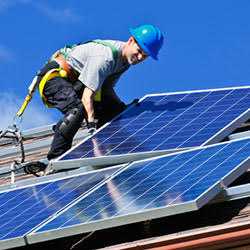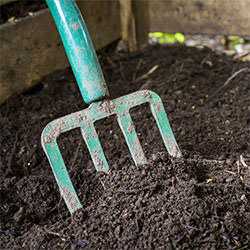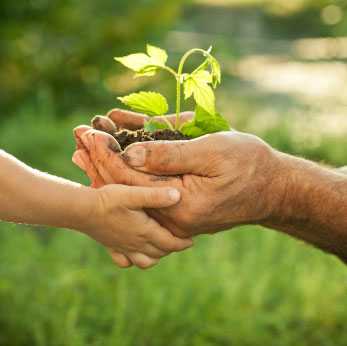Do you think making one or two changes in your daily routine won’t really make a difference in protecting our planet?
Think again...
Not only can they have a HUGE impact, but when combined with everyone else’s one or two changes… we can effectively fight global climate change together!
And leading ecopsychologist Renée Soule from the Sustainable World Coalition, has convened top sustainability experts for tips that you can do right now, right where you are, to turn the tide in Earth’s favor.
Check out these SIMPLE steps you can take to reduce your carbon footprint and inspire others to do the same!
1. Vote with Your Wallet
 People have enormous power to influence change by how they spend their money. Diana Donlon from the Center for Food Safety’s Cool Food Campaign, explains that $200 billion is spent annually to feed families.
People have enormous power to influence change by how they spend their money. Diana Donlon from the Center for Food Safety’s Cool Food Campaign, explains that $200 billion is spent annually to feed families.
And women especially, can shift the entire marketplace landscape by making climate-friendly choices — by choosing fresh, unprocessed organic foods with little or no packaging whenever possible plus buying local ingredients and in-season varieties.
 2. Eat Local
2. Eat Local
Eating food grown and produced within your community or state, whenever possible, not only supports the local economy, it also encourages biodiversity, soil stewardship plus reduces dependence on chemicals that poison the water table and shrinks the carbon footprint caused by producing, packaging and transporting food long distances.
3. Power to the People (Electric Power that Is!)
 In communities around the country, neighbors are coming together to make decisions about sustainable energy sources — both solar and wind — and committing to being more energy efficient on every level.
In communities around the country, neighbors are coming together to make decisions about sustainable energy sources — both solar and wind — and committing to being more energy efficient on every level.
“It’s not just retiring the coal plant, but it’s trying to get your church to go solar or your school to go solar,” says Mary Ann Hitt of the Sierra Club’s Beyond Coal Campaign, “It’s regular people taking simple actions every day, that actually moves us toward a solution on a scale that actually is making a dent in the larger problem.”
4. Look Down the Food Chain
 Experts estimate that the global food system contributes between 44-57% of greenhouse gases from deforestation, agricultural production, food processing, packaging, transportation and disposal.
Experts estimate that the global food system contributes between 44-57% of greenhouse gases from deforestation, agricultural production, food processing, packaging, transportation and disposal.
Understanding how the food we choose to eat is made and gets to us is critical. One example is the choice between drinking a glass of water versus drinking a 6 oz juice box. The box demands a number of resources and ultimately produces packaging that isn’t recyclable. The beverage blend most likely contains corn syrup produced with fossil fuels and bears traces of herbicides and GMO technology. And this is just one item, out of thousands in the grocery store, where the footprint suddenly jumps very high.
So one step is to read the label and the next is to look at the packaging, process involved and how far it traveled.
5. Feed the Soil
 “I see a tremendous opportunity for everyone to get involved in thinking about soil,” says Diana Donlon.
“I see a tremendous opportunity for everyone to get involved in thinking about soil,” says Diana Donlon.
Our world-cultivated soils have lost between 50-70% of their original carbon stock. The carbon that’s been released into the atmosphere is what’s credited as the cause of climate change — as well as ocean acidification that’s destroying our coral reefs.
The exciting news is that we can actually put carbon back into the Earth by composting and rebuilding soil — which has the compound benefits of improved yields, better water filtration, less erosion and more!
Plus, here’s 3 quick soil tips for your home:
- If you have a yard space, consider a compost pile.
- Use cover your garden’s crops on your garden to feed the soil and keep carbon from leaking out.
- If your community doesn’t have one, petition for a resident composting program.
6. Know Your Carbon Footprint
 Do you know how much your daily activities and habits contribute to global warming?
Do you know how much your daily activities and habits contribute to global warming?
Tools like The Nature Conservancy’s Free Carbon Footprint Calculator, can help you measure your impact and may just change the way you live. From inspiring shorter showers to changing the way you eat — you can see the direct correlations between the way you live and the health of the planet making eco-choices obvious and easy!
“And it builds on itself,” says environmental activist Linda Currie, “You start with one thing and you do that and then you start seeing what else you could do.” Pretty soon, after you’ve looked at your own household, you start to look at what else you can do at your schools, stores, community and beyond.
7. Be an Influencer
Stepping up to be the “first on the block” might just be what your community is waiting for.
“We live in the oldest town in West Virginia in a house that was built in 1790, and we put solar panels up,” says Mary Ann Hitt. “We were the first people in this very small town to do it. Once our neighbors saw them and realized this wasn’t some futuristic technology or something that was going to really radically alter their way of life, a couple of them went solar.”
“Our little block is now called the solar district of Shepherdstown,” says Hitt, “and will soon include a historic Presbyterian church.” So you can see how one act has inspired an entire town!
8. Celebrate Your Wins!
Sometimes the enormity of some of the issues we face can truly feel overwhelming. People on the front lines of global activism say that it’s important to set some goals for yourself and your family that you can actually win. “You need to have markers along the way that tell you ‘Yes, I’m on the right track and making a difference,'” says Mary Ann Hitt.
9. Get to Know Your Neighbors
One of the best things you can do to act locally is to get to know your neighbors, say activists.
 “Focus within your block, within your apartment, within your neighborhood so that you make connections,” says Linda Currie. And not only to share resources and information, but to build genuine community and support for one another!
“Focus within your block, within your apartment, within your neighborhood so that you make connections,” says Linda Currie. And not only to share resources and information, but to build genuine community and support for one another!
“We put a ping pong table out in front and have informal food and beverages, and people just come by and we have conversations. As people get to know each other, they trust each other more,” she says.
Other community-building ideas:
-
Block parties
-
Swaps
-
Tool sharing
-
Host panels or speakers on environmental topics
-
Explore group pricing on things like solar panels or building a community garden
10. Slow Down
 Whether it’s fast food, rapid transportation, or immediate comfort, many of the things that have made our lives easier have also turned out to be the biggest threats to the natural world.
Whether it’s fast food, rapid transportation, or immediate comfort, many of the things that have made our lives easier have also turned out to be the biggest threats to the natural world.
And diminishing the threat is going to mean changing our habits, environmentalists say.
“It takes time to cook from scratch and not opt for the processed food. It’s takes planning and time to ride your bike to the farmers’ market. A lot of these things are time-consuming and require a bit more intentionality,” says Diana Donlon. “I’m really trying to slow down and bring that to my daily life.”
11. Pick One (and Start!)
The issues facing our planet are so daunting it can be paralyzing to think about...
 The key is to start somewhere, anywhere, say these esteemed activists. Maybe it’s by making new choices about what you buy and where you shop, or by using public transportation or your own locomotion to get around town. You might begin looking at energy use in your home, and then in your community.
The key is to start somewhere, anywhere, say these esteemed activists. Maybe it’s by making new choices about what you buy and where you shop, or by using public transportation or your own locomotion to get around town. You might begin looking at energy use in your home, and then in your community.
Onramps for making change, big and small, are everywhere. Pick one, do it regularly and add as you go. Discover what you’re passionate about and you’ll be unstoppable!
Saving the planet is not going to happen from the top down. It’s going to take a million small actions from ordinary citizens to really invoke global change.
— Renée Soule
PS - Have more ideas on this critical subject? If so, please share your thoughts below.
[Source: The Shift Network's Spring of Sustainability session on "Tackling Climate Change in your Household & Community"]









